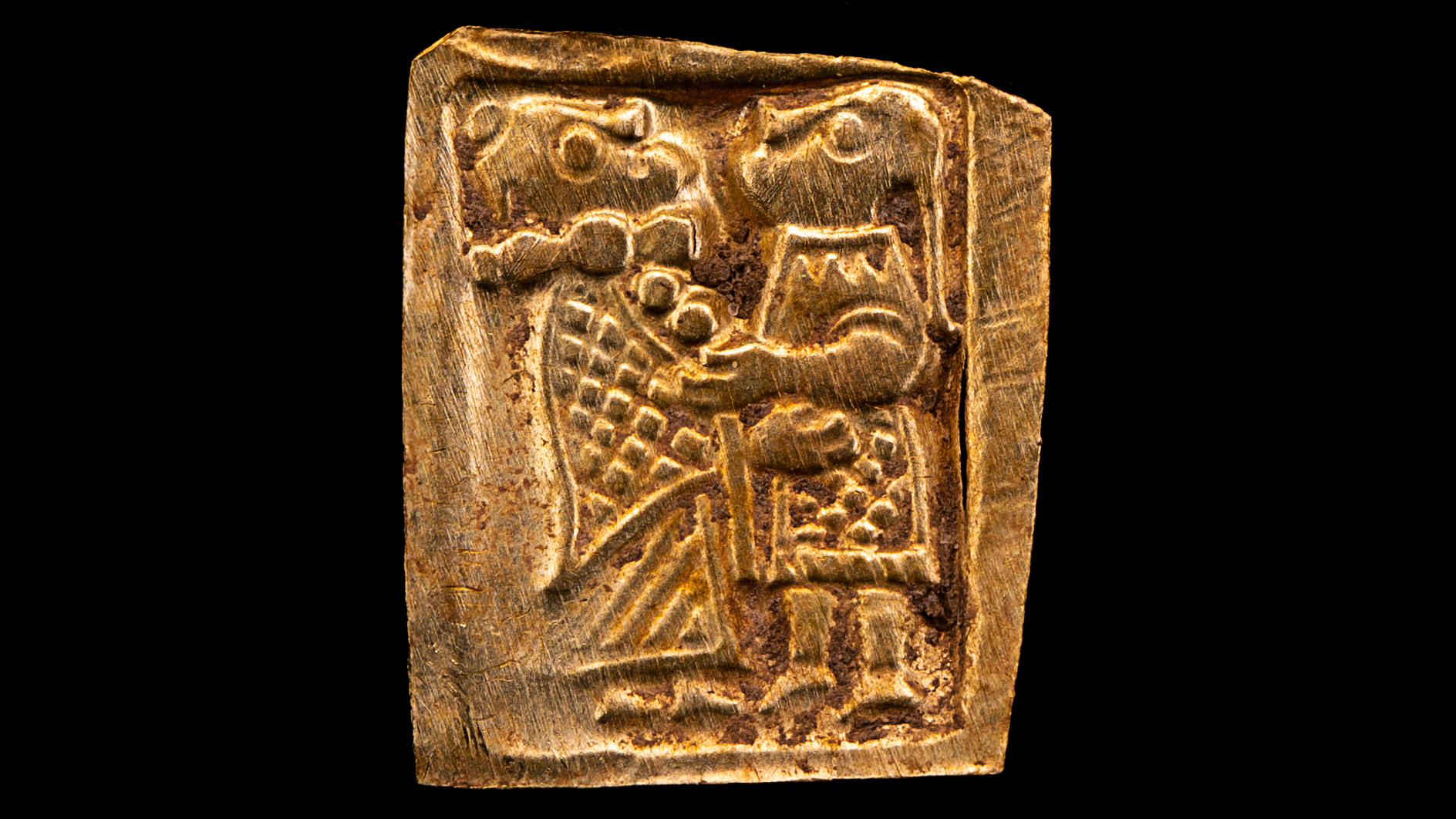When unfolded, these ancient gold foil figures reveal embracing couples

Archaeologists in Sweden have discovered nearly two dozen gold foil figures that have engravings of couples embracing each other.
The figures, which date back about 1,300 years, were found in the remains of a great hall on a platform mound, a human-made structure, at the site of Aska in Sweden. The researchers are still trying to piece together the broken figures to uncover more about them.
"Our best estimate is that we have 22 foil figures. The exact number is not quite clear because most are fragmented, and there is some uncertainty as to which fragments go together," Martin Rundkvist, an archaeology professor at the University of Lodz in Poland, wrote in a report recently uploaded to academia.edu, a site where researchers can upload papers. The report has not been published in a peer reviewed journal.
Related: 25 most mysterious archaeological finds on Earth
Despite being broken, the fragments had some order to them.
"When found, many pieces were folded up more or less neatly," and a goldsmith named Eddie Herlin unfolded them for the archaeologists, Rundkvist wrote. An image in the report shows that one of the folded up figures has its edges folded towards the center. The task of unfolding the gold figures required the support of a specialist like Herlin who was able to unfold the figures without damaging them. After the team unfolded the pieces, it became clear that all of the gold figures had depictions of couples embracing.
Who are they?
It's not clear who the embracing couples are. While gold foil figures have been found at other sites in Sweden, there are no surviving written accounts of them, Rundkvist said.
Sign up for the Live Science daily newsletter now
Get the world’s most fascinating discoveries delivered straight to your inbox.
"You typically find lots of different figures on one site, suggesting that they were brought by visitors from lots of different places as gifts," Rundkvist said. "They are commonly found in and around postholes in large feasting halls. They were probably glued to the posts supporting the roof and anchoring the king's high seat."
One possibility is that the embracing couples are gods and goddesses. "We do know that kings at the time claimed divine descent," Rundkvist said. Or, they may depict princes and princesses who were about to get married, Rundkvist said.
In addition to the engraved gold figures, the archaeologists found the remains of two game pieces made out of whale bone, as well as three iron pendants with spiral patterns. Radiocarbon dating indicates that the hall and its platform were constructed sometime between A.D. 650 and A.D. 680, and archaeological work shows that the hall was eventually dismantled in an organized fashion, one radiocarbon date suggests that this may have taken place around A.D. 940. There is no sign of any violent destruction and the site may have been dismantled by those who used it.
Originally published on Live Science.

Owen Jarus is a regular contributor to Live Science who writes about archaeology and humans' past. He has also written for The Independent (UK), The Canadian Press (CP) and The Associated Press (AP), among others. Owen has a bachelor of arts degree from the University of Toronto and a journalism degree from Ryerson University.










